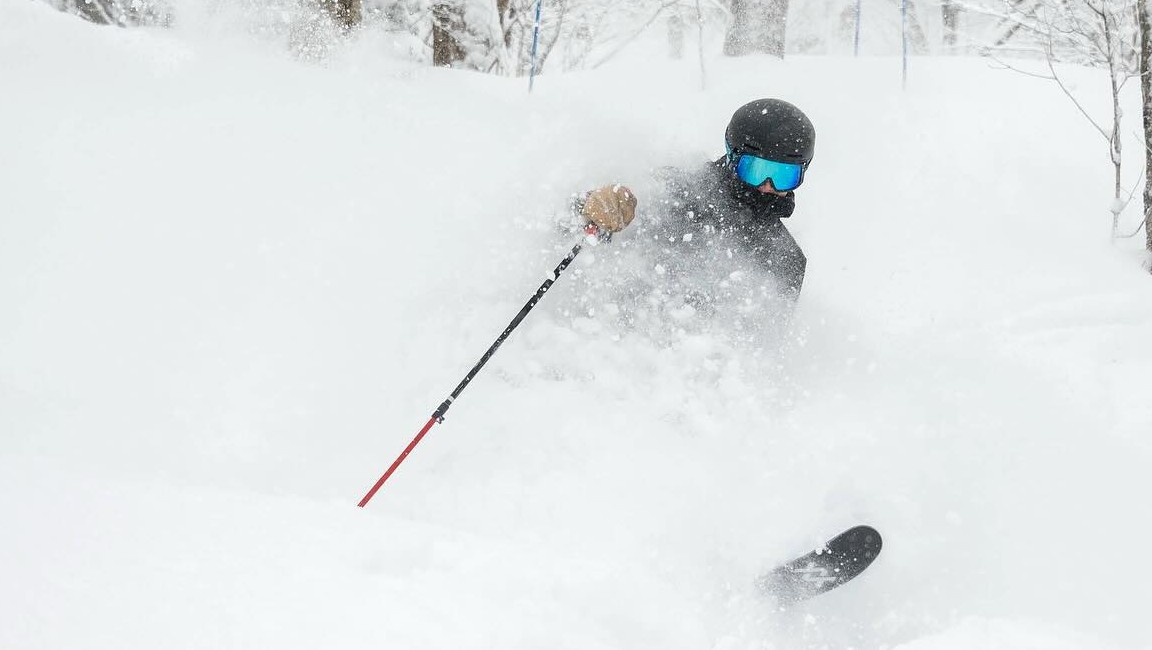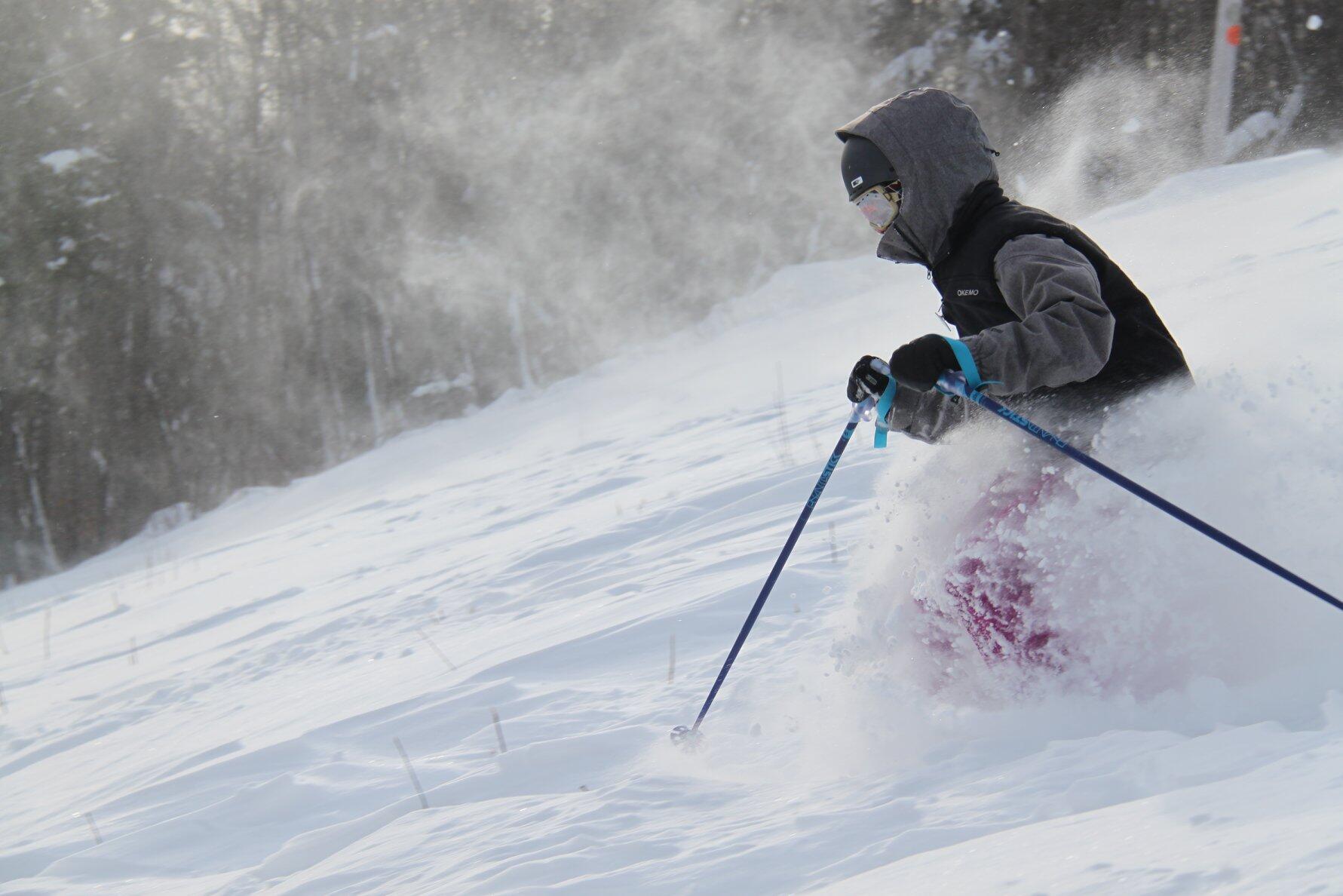
"There is no such thing as bad weather, only bad gear."
"Cold snow is fast snow."
"It's easier to warm up than it is to cool off."
Vermont skiers and riders are known for their optimism, and that extends to outings when the mercury dips down as it has recently in the Green Mountains. You’ll still have plenty of good reasons—like those above—why the cold shouldn’t keep you from having fun on Vermont’s ski slopes.
It takes being prepared and knowing how to best manage the cold when skiing and riding.
Winter clothing technology has reached a point where gearing up—for even the most extreme cold—can be a simple matter of dressing properly. Layers are key. You’ll need a base layer, one or two mid-layers, and finally a water/windproof outer layer.
A synthetic or wool base layer will provide warmth and—most importantly—will keep you dry by wicking moisture away from your body (never wear cotton, which traps moisture and will make you cold once it’s wet). Next, you’ll want an insulating mid-layer (or two), followed by a water and windproof shell. Mid-layers are largely a matter of personal preference; fleece is popular and can be chosen in different weights for optimal insulation-to-bulk ratio. Down is an excellent choice in very cold weather, and wool is still a tried-and-true favorite of many. Combining fleece and down makes for a very warm combo.
The head is a major source of heat loss, and many people find a helmet provides adequate insulation. On really cold days, add a skull liner or balaclava beneath it or a hood over it (just be sure anything you wear under your helmet isn't so thick that it compromises the fit of your helmet).
Brands That Have You Covered (Literally)
Particularly when it is cold and windy, covering exposed ski can make the difference between comfort and frostbite. Face and neck coverings, combined with the fully zipped high neck on a proper ski shell, protect the vulnerable spots at and below your chin. Make sure your goggles fit properly with your helmet to avoid critical heat loss at your forehead. Good, warm gloves or mittens are crucial and be careful taking them off to snap selfies or post to Instagram—cold fingers can take a long time to warm back up. If it’s essential to take your gloves or mittens off, consider glove liners. Additionally, hand and foot warmers are inexpensive and readily available at ski areas – even if you don’t plan to use them, it’s a good idea to keep a pair in your pocket just in case.
Your body needs calories to generate the heat required to regulate and maintain its core temperature. Think of that stack of pancakes and cheeseburger as a bundle of kindling and a chunk of cordwood. Eat adequate meals and keep an energy bar or two in the pocket of your parka for a between-runs boost; an additional candy bar or sugary snack (even maple syrup shots) are good to have in a pinch. Eager skiers and riders who skip breakfast and don't break for lunch to maximize mountain time are setting themselves up for frigid failure. In fact...
Two or three extra runs aren't worth it if your teeth are chattering on every turn. Take breaks. Even a short time warming up in the lodge can serve as a thermal reset button, restoring warmth to your extremities and re-energizing your stoke. Not only that, but tired skiers and riders are more apt to become lax with their form or make careless mistakes. Take a break, grab a cup of hot chocolate from the lodge and you'll be amazed at the difference it makes.
Dehydration is one of the most serious risks to anyone braving the elements during the winter. Breathing cold, dry air robs your body of significant amounts of fluid, and it's difficult to gauge your hydration level when your perspiration is being wicked away from your skin and absorbed by your clothing. Doctors recommend you drink the same amount of water while exercising during the winter—at least six eight-ounce glasses per day—that you would during warmer months. There’s a reason many ski areas have water jugs and cups in their cafeterias.
This may seem like odd advice for someone engaging in outdoor sports such as skiing and snowboarding but the more you move during the process, the warmer you'll be. Wiggle your fingers and toes while riding the lifts. Pick a few lines that require traversing, or even duck-walking up inclines. Once you drop into the fall line, make turns. Lots of them. Of course, it can be a blast to disembark from the lift and (safely) charge your favorite run, but the resulting lack of exertion and perpetual blast of cold air adds up to a recipe for being chilled to the bone. More turns mean longer runs and warmer bodies.
